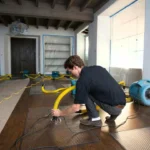Windows have always played a crucial role in determining the overall look and feel of a building, whether it’s a residential property or a commercial space. However, aesthetics are just one part of the story. One innovative solution that enhances both the appearance and safety of windows is the use of window film. These versatile films are gaining popularity across the UK for their dual functionality of beautifying spaces while adding an extra layer of security.
Enhancing Aesthetic Appeal
One of the foremost benefits of window films is their ability to dramatically change the appearance of windows, which in turn transforms the atmosphere of a room. A wide array of designs are available, ranging from frosted and tinted films to decorative patterns that imitate the look of etched glass or stained glass.
Decorative films give designers and homeowners the freedom to integrate additional design elements into a space without undergoing costly renovations. Such additions can serve as focal points or subtle enhancements that contribute to an overall cohesive interior look. The use of coloured and patterned films can introduce elegance, professionalism, or even whimsy, depending on the desired outcome.
Moreover, films can reduce glare and improve light diffusion. By softening incoming natural light, spaces can appear warmer and more inviting. In offices, this can reduce eye strain for employees, thus contributing to improved productivity.
Augmenting Security and Privacy
Apart from the aesthetic advantages, window films are designed to enhance the safety and security of windows. Thicker security films work by holding shattered glass fragments in place in the event of an accidental or intentional breakage. This mitigates the risk of injury by preventing shards from scattering and makes it more difficult for potential intruders to penetrate through the glass.
For businesses, the addition of security window film can serve as a deterrent against vandalism and theft. Though not bulletproof, these films add a layer of strength that can delay forced entries, providing valuable time for authorities to respond.
Privacy is another important feature offered by window films. Both frosted and opaque films allow natural light to permeate while obscuring the view from outside. This makes it possible for offices, clinics, and homes situated on busy streets to maintain discretion without sacrificing daylight access.
Improving Energy Efficiency
In a world increasingly conscious of energy consumption and sustainability, window films can contribute positively by improving a building’s thermal efficiency. Tinted and reflective films help manage solar heat gain by reflecting significant amounts of infrared and UV rays away from the building. This can result in cooler interior temperatures during the summer months and less dependency on air conditioning systems, subsequently lowering energy bills.
Additionally, by filtering UV rays, window films help in protecting furnishings, carpets, and artworks from sun damage and fading, thereby extending the life of interior decor. Such benefits resonate well with both residential and commercial entities looking to boost their eco-friendly footprint.
Conclusion
Window films offer a multifaceted approach to enhancing building design and functionality. By improving aesthetics, boosting security, contributing to energy efficiency, and providing privacy solutions, window films have become an indispensable part of modern architecture and interior design across the UK. Whether used in homes to protect families or in businesses to safeguard assets, window films present a practical solution that caters to both beauty and security needs.










